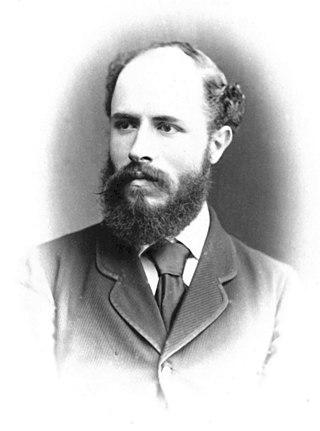
James Wood-Mason was an English zoologist. He was the director of the Indian Museum at Calcutta, after John Anderson. He collected marine animals and lepidoptera, but is best known for his work on two other groups of insects, phasmids and mantises.

Johann Ludwig (Louis) Gerard Krefft, a talented artist and draughtsman, the Curator of the Australian Museum for 13 years (1861-1874), and a hard-working, effective, and respected scientist and natural historian, was one of Australia's first and most influential zoologists and palaeontologists.

Ralph Tate was a British-born botanist and geologist, who was later active in Australia.

The Royal Birmingham Society of Artists or RBSA is an art society, based in the Jewellery Quarter in Birmingham, England, where it owns and operates an art gallery, the RBSA Gallery, on Brook Street, just off St Paul's Square. It is both a registered charity, and a registered company.

Jacob Whitman Bailey (1811–1857) was an American naturalist, known as the pioneer in microscopic research in America.
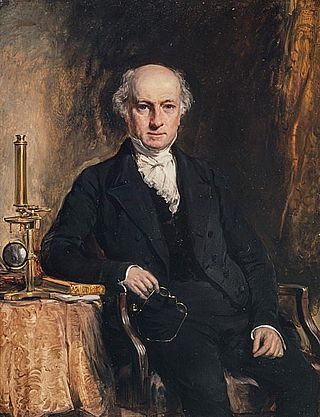
George Johnston was a Scottish physician and naturalist.

Sir George Hamilton Kenrick FRES was an English entomologist who specialised in Lepidoptera especially those of New Guinea. He was a prominent liberal educationist and was a councillor in Birmingham.

William Archer was an Irish naturalist and microscopist especially interested in Protozoa and Desmids.

James Eustace Bagnall ALS was an English naturalist with a particular interest in botany, especially bryology. He was the author of the first Flora of Warwickshire (VC38) in 1891. A noted bryologist, he wrote the Handbook of Mosses in the Young Collector Series, various editions of which were published between 1886 and 1910.
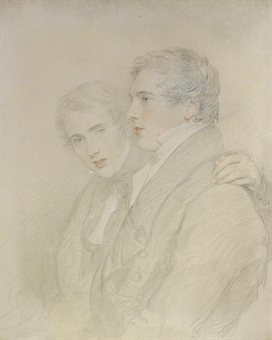
Andrew Bloxam was an English clergyman and naturalist; in his later life he had a particular interest in botany. He was the naturalist on board HMS Blonde during its voyage around South America and the Pacific in 1824–26, where he collected mainly birds. Later as a Church of England minister he lived in Warwickshire and Leicestershire and made significant contributions to the study of the natural history of the area. His special interest was in fungi and the genera Rubus and Rosa. His botanical author abbreviation is "A.Bloxam".

William Hunt Painter was an English botanist who made a significant contribution to the science of Derbyshire vascular plant flora. He was a keen and wide-ranging collector of plant specimens, and was a member of the Botanical Exchange Club. In 1889 he published the first in a series of four books, all by different authors and spanning 120 years, all called The Flora of Derbyshire.
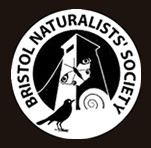
The Bristol Naturalists' Society is an organisation whose objectives include the promotion of the study of natural history, particularly that of the Bristol area, and the conservation of the fauna, flora, and geological sites of Britain. It was founded in 1862 and celebrated its 150th anniversary in 2012.
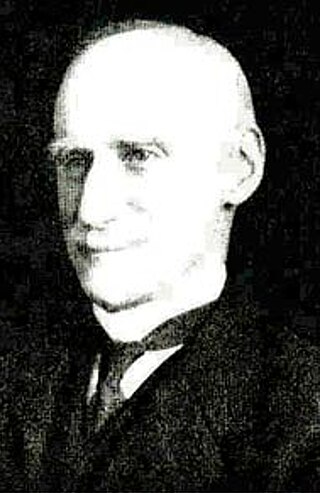
William Bywater Grove, was an English biologist, in particular a botanist and microbiologist. He is remembered in particular as a mycologist. He died in 1938 on the sixth of January when he was 89.

William Harris was a Liberal politician and strategist in Birmingham, England, in an era of dramatic municipal reform. On his death, he was described by one obituary-writer as "one of the founders of modern Birmingham". J. L. Garvin called him "the Abbé Sieyès of Birmingham" ; and Asa Briggs "a most active and intelligent wire-puller behind the scenes". He was dubbed the "father of the Caucus", the highly organised and controversial Liberal party machine that had its origins in Birmingham, but was afterwards introduced at national level to the National Liberal Federation. He served as the first Chairman of the National Liberal Federation from 1877 to 1882. By profession he was an architect and surveyor; and he was also a prolific journalist and author.

George Stephen West, ARCS, FLS, was a British botanist, a specialist in phycology and protistology, a botanical illustrator and a writer. With his father. botanist William West, he collaborated on numerous scientific books. West's brother was the botanist William West Jr, who assisted his father with fieldwork.
Walter Edward Collinge was a British zoologist and museum curator. He is notable for his academic work on terrestrial slugs and Isopoda and on economic biology.
James Stirton was a Scottish physician and one of Scotland's leading experts on cryptogamic botany. His investigations in bryology and lichenology earned him a world-wide reputation.
Christina Mayne Dony was an English botanist and athlete.
William Gabriel Blatch was a British entomologist and superintendent.
The Midland Union of Natural History Societies was an association of amateur groups in the English Midlands and central Wales, which existed from 1877. For sixteen years it published a journal, The Midland Naturalist, and from 1881 awarded a medal, the Darwin Prize. The phrase "Natural History" was interpreted broadly, and the groups' interests included archaeology, architecture and geology.















